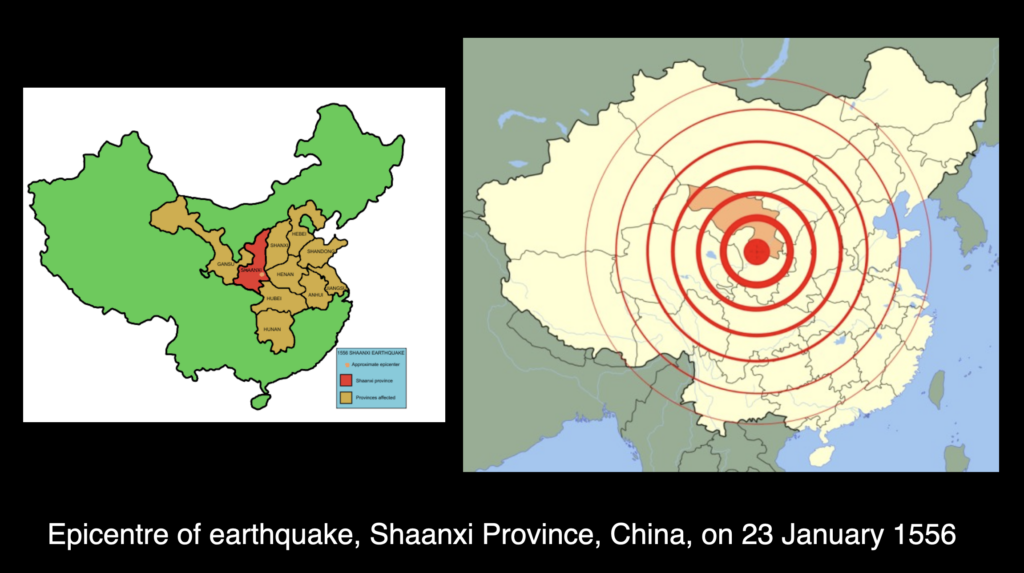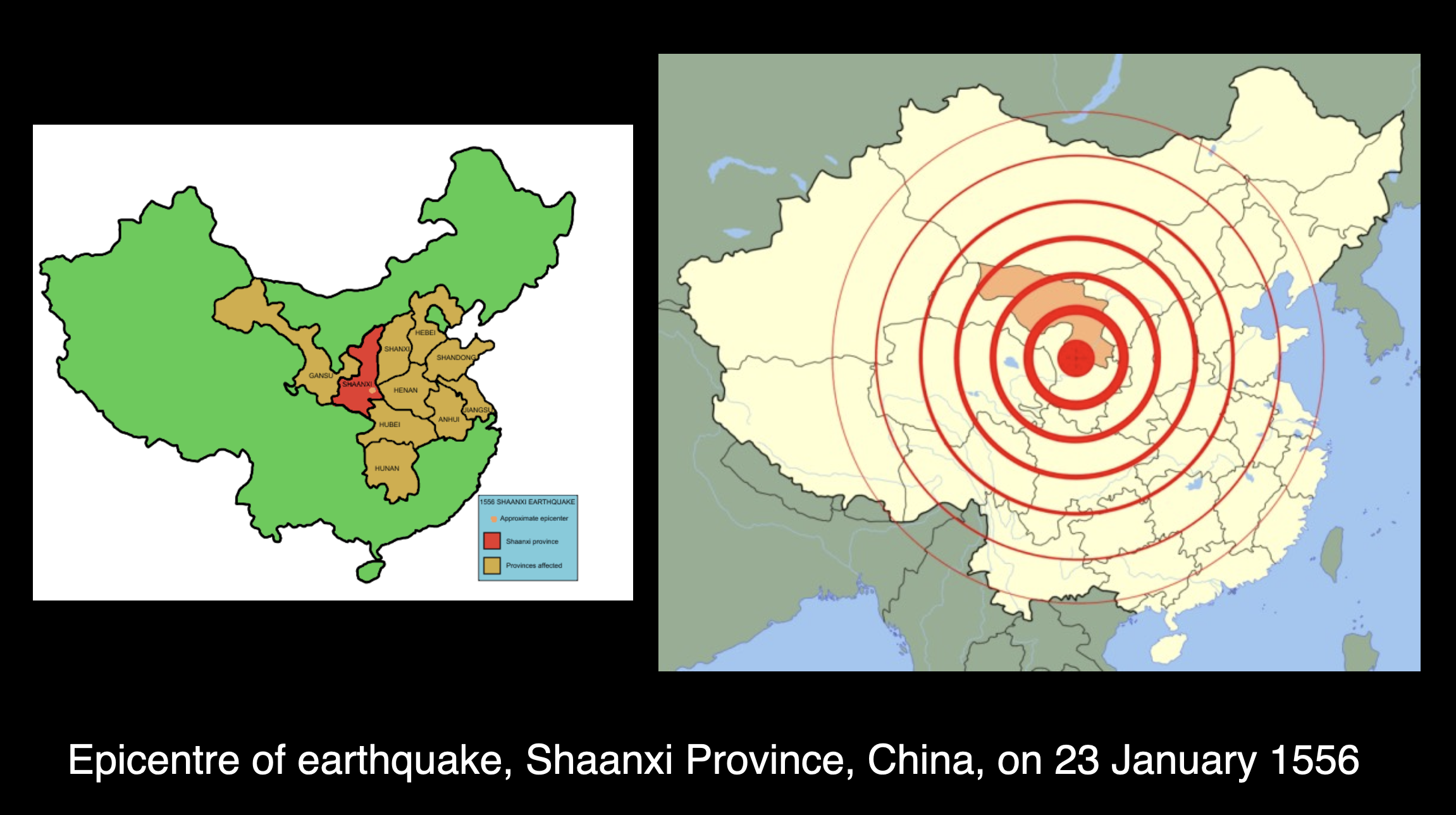One of the deadliest earthquakes in recorded history, the Shaanxi earthquake, struck China’s Shaanxi province. It had a magnitude of between 8.0 and 8.3, and resulted in the deaths or displacement of an estimated 830,000 people. At least 100,000 died directly from the quake, while a further 730,000 either perished in the ensuing famines or else migrated elsewhere.
The earthquake occurred in the early morning during the reign of Emperor Jiajing of the Ming Dynasty. The epicentre was located in the Wei River Valley in Shaanxi province near the city of Huaxian (now the Huazhou District of Weinan), which was completely destroyed. Nearby cities, such as Weinan and Huayin, were also devastated. Crevices as deep as 20 meters (66 feet) opened in the ground, and landslides were triggered, further increasing the death toll.
The immense loss of life is thought to be due to the large number of people living on the Loess Plateau in earth dwellings called yaodongs. Used since 2000 BC, yaodongs were carved into hillsides or caves. These structures, with earth surrounding the indoor space, provide cool interiors during hot seasons and warmth in winter. Unfortunately, many yaodongs collapsed or flooded during the earthquake.
Besides causing such a terrible loss of life, the earthquake badly damaged many ancient monuments. Ancient Chinese writings on stone stelae were housed in the Stele Forest, a museum built in 1087 to preserve these important historical artifacts. A stele is an upright stone that is inscribed or carved to commemorate an event, grave or achievement. Of the Kaicheng Stone Classics, which include the Book of Changes (I Ching), Rites of Zhou, and the Book of Songs, 40 of the 114 steles were broken. The Small Wild Goose Pagoda in Xi’an, built in 652 as a Buddhist shrine, originally stood 45 meters (148 feet) tall. The earthquake caused it to lose three levels, and it now stands at 43 meters (141 feet).
An area spanning 840 square kilometres (520 square miles) was badly damaged, and aftershocks were felt in the region several times a month for six months afterward. Shaanxi province and the Wei River Valley contain 3 major fault lines. Since 2023, Shaanxi has experienced 20 earthquakes, but fortunately only two of them registered over the magnitude of 4. No one knows when the next big one will hit this region.


